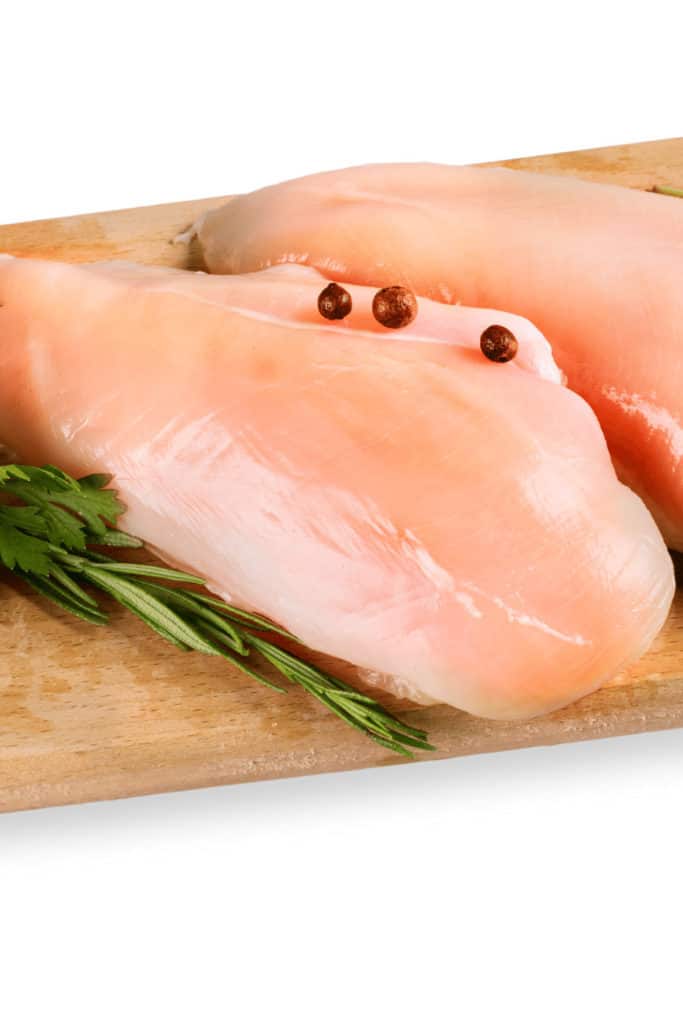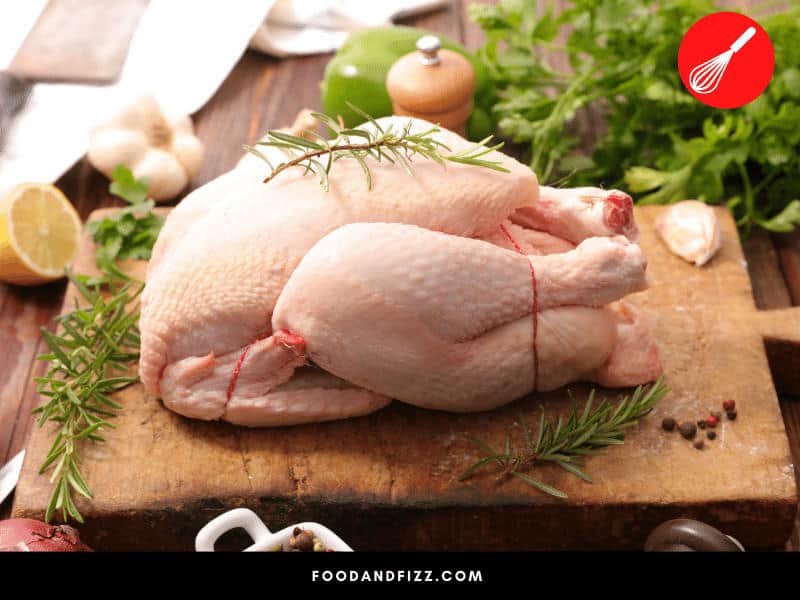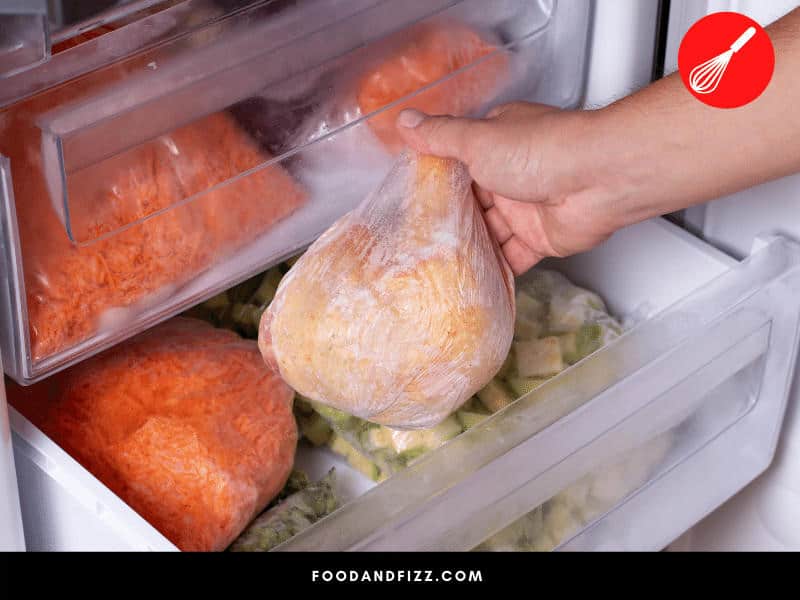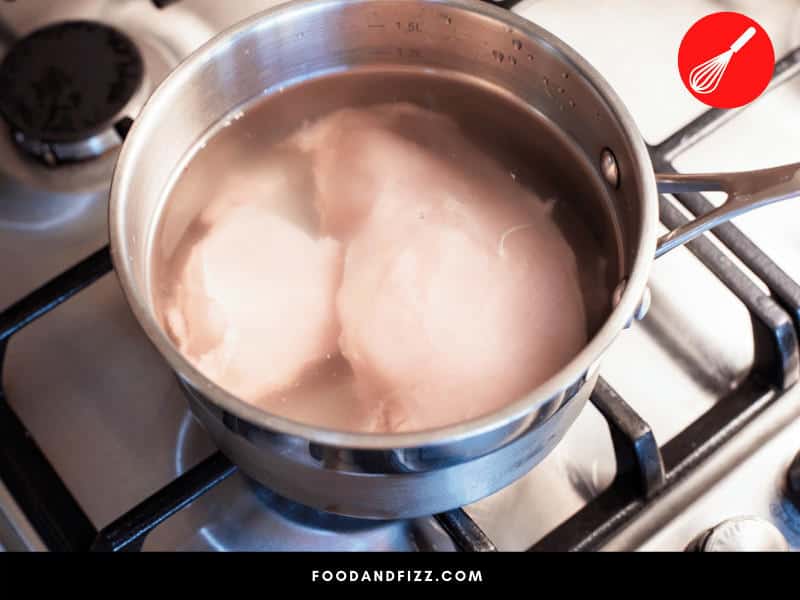If you’ve ever cooked chicken at home, chances are you’ve seen some red spots on it.
But what are the red spots on chicken? Are they bad for you? Should you feel safe eating them? In this blog post, we’ll answer all those questions and more. We’ll tell you exactly what those red spots are and let you know whether or not they’re something to worry about.
Chicken is meat you want to cook properly, especially from the grocery store. Chicken is one of the highest causes of Salmonella, according to USDA. If the chicken you are cooking has gone bad or is not cooked properly, you are at risk.
With this in mind, if you go to cook your chicken and notice red spots on it, this can be alarming. So are red spots on chicken something to be worried about?
What Are the Red Spots On Your Chicken?
The red spots on chickens are blood spots caused by damaged blood cells that burst and show on the surface of the chicken. As long as you cook your chicken properly, eating chicken with red spots is safe. If there are other colors on your chicken, like black or white growth, the chicken is bad and has to be thrown out.

What Causes Red Spots on Chicken?
The majority of the chicken industry has poor living conditions for chickens. They are forced to live in small spaces with other chickens and can get hurt easily.
When a chicken is mistreated, it will cause the body to break down and eventually, the chicken will start to show signs of this abuse.
The red spots occur on chickens when they are poorly handled, and this can occur when the chicken is still on the farm or when it is being processed.
As the chicken is damaged the blood cells in the body will break down and the blood will start to rise to the surface as opposed to staying below the skin.
The blood that rises to the surface shows small red dots or patches of red areas on the chicken.

Is It Safe to Eat Chicken With Red Spots?
It depends on how the red spots look. Some certain viruses and diseases can cause red spots on chickens. However, if the red spots are small and only on the surface of the chicken, then it is safe to eat.
You should avoid eating chicken that has large patches of red or bruising. This could be a sign of a more serious health concern in the chicken, and it is unsafe to eat.
As long as you’re following the same cooking guidelines that you would usually use, there’s no need to worry about eating chicken with red spots. Just make sure to use a cooking thermometer to ensure that your chicken is cooked all the way through before serving it.
There should be no difference in taste or quality when you eat chicken with red spots. The only difference will be in the appearance of the chicken.
If you have any concerns about the red spots on your chicken, it’s always best to err on the side of caution and throw it out. It’s not worth risking getting sick from eating bad chicken.

Do Other Meats Have Red Spots Too?
Red dots on other pieces of meat won’t be as noticeable as on chicken. This is because the meat itself is generally red already so there won’t be any way to see if it has been mishandled.
You may see red spots on ground beef or pork, but they’re not as common as on chicken. If you do see them, it’s best to cook the meat all the way through to be safe.
Since it will be hard to recognize red dots on other types of meat, you’ll have to pay close attention to the sell-by date. If the meat is past its sell-by date, it’s best to throw it out.
You can also look for other signs that the meat has been mishandled, such as bruising or strange colors on the surface of the meat. If you see anything unusual, it’s best to toss it rather than run the risk of something unhealthy entering your body.

Do Red Spots Go Away With Cooking?
Cooking the chicken will alter the color and the appearance of the red spots. However, it will not make them go away completely. If you’re concerned about the way your chicken looks, you can try to remove the red spots before cooking.
To do this, soak the chicken in cold water for a few minutes. This will help to dilute the blood and make the spots less visible.
You can also try to trim away any red or bruised areas before cooking the chicken. If you’re still uncomfortable with the way the chicken looks, you can always cook it longer so that any remaining bacteria is killed.
As long as you follow the proper cooking guidelines, there’s no need to worry about eating chicken with red spots on it.

How To Get Chicken Without Red Spots
The only way to avoid red spots on the chicken is by buying organic or certified humane chicken. These chickens are raised in better conditions and are not mistreated. The living conditions are typically much better, and the chicken has more space to roam.
When you buy organic or certified humane chicken, you can be sure that the chicken has not been given any hormones or antibiotics.
The downside to buying organic or certified humane chicken is that it’s typically more expensive than regular chicken. If you’re on a budget, you may want to stick with regular chicken and be extra careful about cooking it properly.
Just because chicken is organic doesn’t always mean it has been handled properly. This is another cause of red spots so you’ll want to give the chicken you’re thinking of buying a close look in the package before taking it to checkout.
Why Improper Handling and Processing Can Lead To Red Spots on Chicken
The main cause behind the red spots on the chickens is the handling and processing of the chickens in the processing plant. If your chicken meat comes from a plant that does not adhere to proper bite-hearing methods, you will notice these red spots. Blood needs to be properly drained from the chicken before butchering it.
Poor handling and butchering methods can lead to blood pooling in unintended areas of your chicken meat. Chickens that have also been raised too quickly can display red spots on their meat when it is raw.

If a chicken has been raised too quickly in poor conditions, you are more likely to see red spots on the legs and thighs of your cuts of chicken. If the chicken you eat was fed extra amounts to increase its size rapidly, blood vessels can break even before the chicken is butchered.
If, during the butchering process, the chicken isn’t prepared properly; it will have red spots on it when it is uncooked. Usually, this indicates a butchering job done quickly or lacking skill.
How Refrigeration Can Lead To Red Spots
Another cause of red spots is the rate at which the meat is refrigerated or frozen after butchering. If it is chilled or frozen quickly and there is any remaining blood, the spots will surface. This is because the veins in the meat constrict as it drops in temperature.
This constriction can force out any remaining blood that has not been drained. This will lead to you seeing blood spots in areas around the veins.

This typically happens with refrigeration, as when chicken is flash-frozen, it freezes so quickly that any remaining blood does not have a chance to be released from the veins.
Chicken That is Chilled or Frozen Too Quickly May Have Red Spots As Remaining Blood in the Veins Are Not Properly Drained.
How To Get Rid Of Red Spots On Chicken
You can remove the red spots on your chicken by boiling it. The red spots are blood. Boiling it cooks the chicken in a way that will flush the blood out from under the skin.
When boiling chicken to remove red spots, you can boil it before cooking it with other methods. However, if you cook your chicken, ensure it is at USDA standard temperature of 165 °F.
If you cook your chicken using a different method, you may find that the red spots remain. This does not mean that your chicken is unsafe to eat, it just means that blood has been trapped beneath the skin. You will notice that cooked blood will darken in color. You can still safely eat chicken that has dark red spots.

How To Tell If Chicken Is Spoiled
While red spots do not typically indicate that your chicken has spoiled, it is always better to err on the side of caution. Even if your chicken is not past the ‘best by’ date on the packaging, it can still be spoiled.
One indication that your chicken has spoiled is if there is a significant smell. Chicken should have a mild to no odor. If there is an odor, your chicken is most likely spoiled. If so, you will notice the smell before the chicken is cooked.
Another sign that your chicken is spoiled is the texture. Chicken that has spoiled will feel slimy. This is a sign that your chicken has bactericide growth. As the bacteria grow, the presence of salmonella changes the texture, feel, and odor of your chicken.

While red spots are not the main sign of your chicken being spoiled, if you notice a change in texture, smell, or additional discoloration, you should toss your chicken.
Red spots do not necessarily indicate spoilage. It is important to check for other signs of spoilage like texture and odor.
Frequently Asked Questions
How to Spot Bad Chicken?
There are many signs that chicken has gone bad you can recognize when shopping. If the smell is rancid and off-putting, then it hasn’t gone well. Also, if the color is greyish, if mold is growing on it, or if it’s slimy you will know the chicken has gone bad.
What’s the Best Chicken To Buy?
Chickens are typically more expensive, but they’re also healthier and have a better flavor. Free-roam and grass-fed chicken will also have fewer issues and be better for you to eat.
What is the ideal temperature for cooking chicken?
When cooking chicken, you want to get it to at least 165 °F. If you do not reach this temperature, there isn’t enough heat to kill off potentially harmful bacteria.
Do red spots on chicken affect the nutritional value of the meat?
Red spots on chicken do not affect the overall nutritional value of your chicken. These spots are just areas where the blood has not been properly drained. Once you cook your chicken, the spots will disappear.
If the red spots don’t disappear while cooking my chicken, is it still safe to eat?
Depending on the method of cooking you are using. You may notice that the red spots do not disappear. You will notice that they have darkened. As long as you have cooked your chicken to the right temperature, your chicken will still be safe to eat. The spots remain because the blood wasn’t able to get out and cooked along with your meat.
Conclusion About What Are The Red Spots on Chicken
The red spots that you see on chickens are typically blood spots. While they may look alarming, you can safely eat your chicken if it has not spoiled. Red spots are usually something that you see on chicken that was not handled properly. If the chickens are not prepared and processed properly, the appearance of the meat will be poor.
Just because your chicken has red spots doesn’t mean it’s bad. These spots are usually from blood vessels that have burst during the slaughtering process. The chicken is still perfectly safe to eat as long as it’s been properly cooked.
So, there you have it! Don’t be alarmed the next time you’re at the grocery store and see red spots on chicken. Just make sure to cook it properly, and you’ll be fine.

